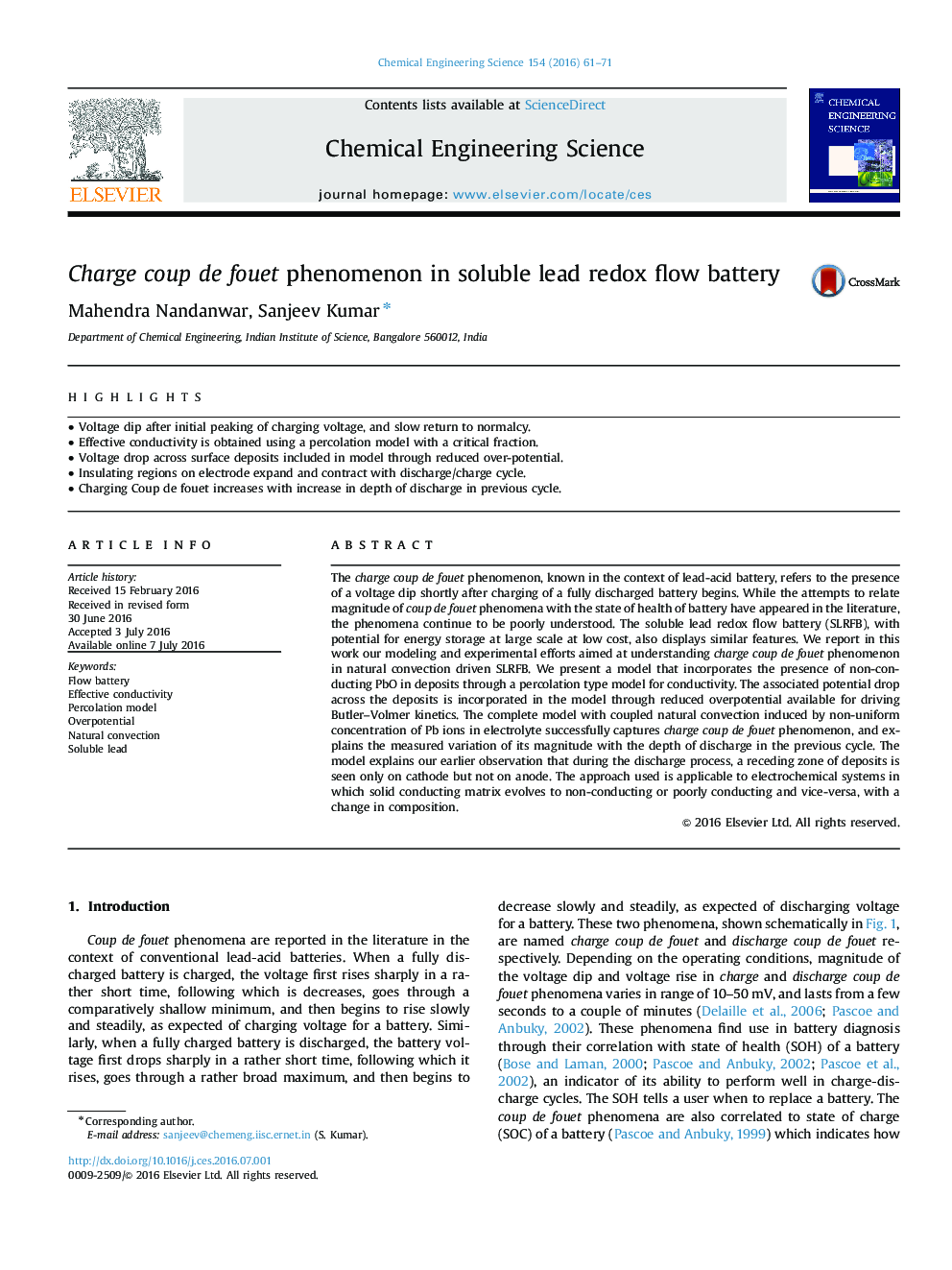| کد مقاله | کد نشریه | سال انتشار | مقاله انگلیسی | نسخه تمام متن |
|---|---|---|---|---|
| 6468016 | 1423265 | 2016 | 11 صفحه PDF | دانلود رایگان |
- Voltage dip after initial peaking of charging voltage, and slow return to normalcy.
- Effective conductivity is obtained using a percolation model with a critical fraction.
- Voltage drop across surface deposits included in model through reduced over-potential.
- Insulating regions on electrode expand and contract with discharge/charge cycle.
- Charging Coup de fouet increases with increase in depth of discharge in previous cycle.
The charge coup de fouet phenomenon, known in the context of lead-acid battery, refers to the presence of a voltage dip shortly after charging of a fully discharged battery begins. While the attempts to relate magnitude of coup de fouet phenomena with the state of health of battery have appeared in the literature, the phenomena continue to be poorly understood. The soluble lead redox flow battery (SLRFB), with potential for energy storage at large scale at low cost, also displays similar features. We report in this work our modeling and experimental efforts aimed at understanding charge coup de fouet phenomenon in natural convection driven SLRFB. We present a model that incorporates the presence of non-conducting PbO in deposits through a percolation type model for conductivity. The associated potential drop across the deposits is incorporated in the model through reduced overpotential available for driving Butler-Volmer kinetics. The complete model with coupled natural convection induced by non-uniform concentration of Pb ions in electrolyte successfully captures charge coup de fouet phenomenon, and explains the measured variation of its magnitude with the depth of discharge in the previous cycle. The model explains our earlier observation that during the discharge process, a receding zone of deposits is seen only on cathode but not on anode. The approach used is applicable to electrochemical systems in which solid conducting matrix evolves to non-conducting or poorly conducting and vice-versa, with a change in composition.
Journal: Chemical Engineering Science - Volume 154, 2 November 2016, Pages 61-71
